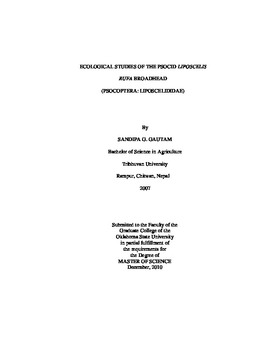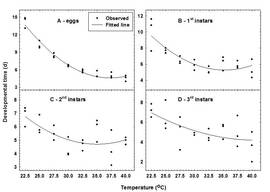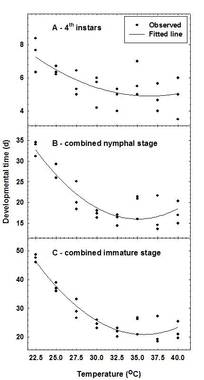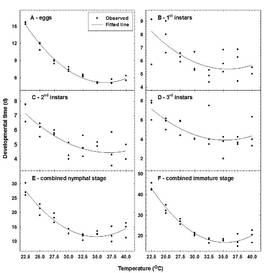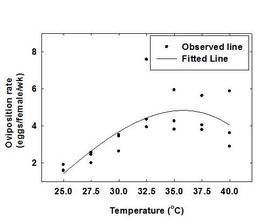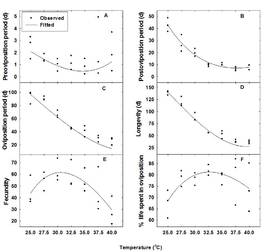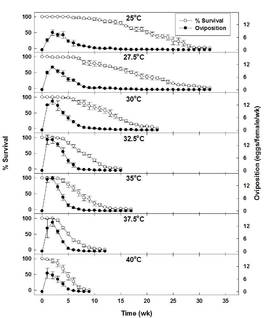| dc.contributor.advisor | Opit, George P. | |
| dc.contributor.author | Gautam, Sandipa | |
| dc.date.accessioned | 2014-04-15T21:16:45Z | |
| dc.date.available | 2014-04-15T21:16:45Z | |
| dc.date.issued | 2010-12-01 | |
| dc.identifier.uri | https://hdl.handle.net/11244/8995 | |
| dc.description.abstract | Psocids (Psocoptera) have risen to prominence as serious pests of stored-products worldwide in the last two decades. However, very little is known about their ecology and biology which is crucial for the development of effective management strategies. In this study, I investigated the effects of constant temperatures and relative humidities on the population growth, effect of constant temperatures at optimal relative humidity on the development and reproductive parameters of Liposcelis rufa in order to elucidate the influence of environmental conditions on its biology and the ecology. My research has shown that L. rufa can survive and multiply at a low relative humidity of 55% at temperatures of 22.5 to 30C and a high temperature of 40.0C at 75% RH. The optimal conditions for reproduction for this species are 35.0C and 75% RH where population increased 73- fold. The shortest developmental time from egg to adult was recorded at 37.5C; at this temperature development of female was completed in 21.6 d. Males have shorter life cycle than females and this may be due to the fact that females have one more instar compared to males. L. rufa males had two to four instars whereas females had two to five instars. Temperature has significant effect on development time for all developmental stages. Also, my work has demonstrated that L. rufa has a higher intrinsic rate of population increase compared to other psocid species (0.18). It oviposits at a wider range of temperature from 25 to 40C, and the highest fecundity was recorded at 30C (63 eggs).The highest oviposition rate was recorded at 35C (15.4 eggs/ female/ wk), 2 wk after the initiation of oviposition. L. rufa can live up to 9 wk at 40C, and the longest living individual lived 219 d at 27.5C. Given its ability to multiply rapidly at high temperatures and relative humidities, its short life cycle, high intrinsic rate of increase, and the ability to live for long, especially at higher temperatures suggests L. rufa has great potential to be a serious stored product pest in hot and humid climates. In addition, it is likely to have a broader ecological distribution because it can survive and multiply at temperatures of 22.5 - 40C and 55-75% RH. Finally, the temperature-dependent equations I have developed for L. rufa developmental stages and reproductive parameters can be used to elucidate its population dynamics and to facilitate the development of effective management strategies for this pest. | |
| dc.format | application/pdf | |
| dc.language | en_US | |
| dc.publisher | Oklahoma State University | |
| dc.rights | Copyright is held by the author who has granted the Oklahoma State University Library the non-exclusive right to share this material in its institutional repository. Contact Digital Library Services at lib-dls@okstate.edu or 405-744-9161 for the permission policy on the use, reproduction or distribution of this material. | |
| dc.title | Ecological Studies of the Psocid Liposcelis rufa Broadhead (Psocoptera: Liposcelididae) | |
| dc.type | text | |
| dc.contributor.committeeMember | Giles, Kristopher L. | |
| dc.contributor.committeeMember | Adam, Brian D. | |
| osu.filename | Gautam_okstate_0664M_11278.pdf | |
| osu.college | Agricultural Sciences and Natural Resources | |
| osu.accesstype | Open Access | |
| dc.description.department | Department of Entomology and Plant Pathology | |
| dc.type.genre | Thesis | |
